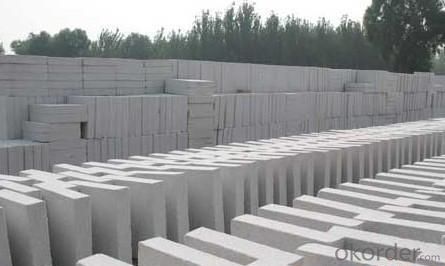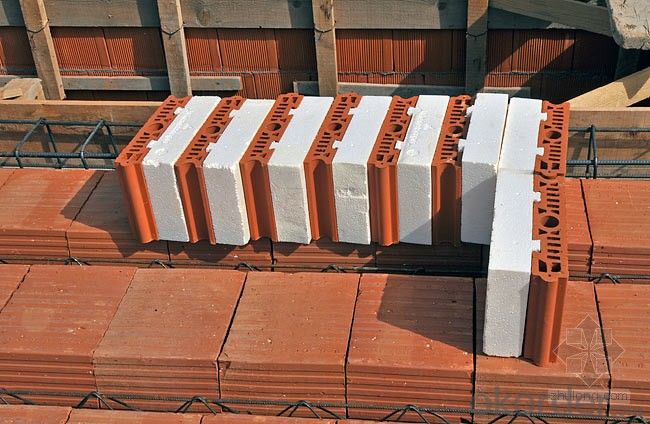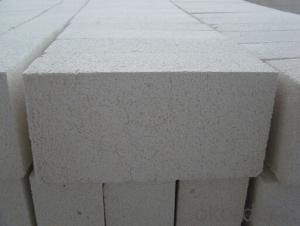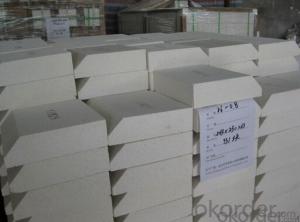Refractory Mullite Insulating Fire Brick JM 26
- Loading Port:
- Shanghai
- Payment Terms:
- TT OR LC
- Min Order Qty:
- 5000 kg
- Supply Capability:
- 100000 kg/month
OKorder Service Pledge
OKorder Financial Service
You Might Also Like
Top insulation ceramic fiber blanket
General information of ceramic fiber blanket
Cmax ceramic fiber blanket is made of high quality kaolin clay, centrifugal high purity alumina and silica or blowing process. It's no asbestos. Double side acupuncture for easy installation provides a lot of tension or strength of the blanket.
Products are divided into standard, high pressure, HA and Hz, respectively, corresponding to the highest service temperature of 1000, 1100, 1200, and 1350
Characteristics of ceramic fiber blanket
Heat resistance
Light weight
Low thermal conductivity
Low heat storage
Thermal shock toughness
High tensile strength
Application of ceramic fiber blanket
Refractory fiber lining for petrochemical process heating furnace
Heat treatment furnace or intermittent (shuttle) kiln heat surface lining
General oven standby insulation
Heat sealing or kiln kiln car door
Electrical insulation
Ceramic fiber blanket
Common problem solutions
1. What products do you have?
We have all kinds of refractory bricks, refractory casting materials, mortar, cement, ceramic fiber products, etc..
Or you can browse our products to choose what you need.
2. How to control product quality?
With strict quality control system throughout the material selection and production process, we have the quality of refractory materials and ceramic fiber products to meet customer requirements.
From the selection of raw materials, the quality of our control to start. The quality certificate of the raw material is required, each batch of the products are to be tested in the use of the forward line. In the production process, the quality control by the workers, and then each piece of classification, and through the quality supervision and inspection.
3. Can you give me a brief introduction to the application of your product?
My company is mainly engaged in refractories in the steel, cement, glass, ceramics, petrochemical, electric power and other industries.
4. What information do you need if I need you?
In order to select the right products, we will provide us with information, such as the United States, technical data, order quantity, product application, etc..
If you have any questions, please contact us.


FAQ
1. Which products do you have?
We have all kinds of refractory brick, castable, mortar, cement, ceramic fiber products, etc.
Or you could browse our products to choose what you need.
2. How do you control the products quality?
With strict quality control system throughout the materials selection and production process, our refractory and ceramic fiber products quality is effectively controlled to meet customer requirements.
From the raw materials selecting, our quality control begin. The quality certificates of raw materials are required and each batch will be tested before using. During production, the quality control are conducted by workers and then each piece will be sorted and examined by quality supervise.
3. Can you give me a brief introduction of the application of your products?
We are mainly specializing in the refractory materials in iron and steel, cement, glass, ceramics, petrochemical, electric power Industry, etc.
4. If I need your offer, what information do you need?
In order to choose suitable products, it will be appreciated to provide us the information, such us specification, technical data, order quantity, products application etc.
If any question, please contact us freely.
- Q:Do insulating fire bricks have a high insulating capacity?
- Insulating fire bricks possess a remarkable capacity for insulation. Crafted with utmost precision, these bricks exhibit exceptional thermal insulation characteristics, rendering them exceptionally proficient in obstructing heat transfer. Their composition entails lightweight materials like ceramic fibers, known for their minimal thermal conductivity. Consequently, insulating fire bricks adeptly capture and maintain heat, effectively thwarting its escape and ensuring adequate insulation of the surrounding space. Owing to their superior insulating capacity, these bricks find extensive utilization in domains that prioritize heat retention and energy efficacy, including furnaces, kilns, and fireplaces.
- Q:Can insulating fire bricks be used in the construction of kilns?
- Yes, insulating fire bricks can be used in the construction of kilns. Their high insulating properties help to retain heat and improve energy efficiency in the kiln, making them a popular choice for lining the walls and floor of kilns.
- Q:Are insulating fire bricks resistant to hydrofluoric acid?
- Insulating fire bricks are not resistant to hydrofluoric acid. Hydrofluoric acid is a highly corrosive substance that can attack and dissolve many materials, including fire bricks. It is important to handle hydrofluoric acid with extreme caution and use appropriate protective equipment when working with this hazardous substance.
- Q:What materials are used to make insulating fire bricks?
- Insulating fire bricks are typically made using lightweight aggregates such as vermiculite, perlite, or expanded clay. These aggregates are mixed with a high-temperature refractory material such as alumina, silica, or zirconia, along with a bonding agent like clay or phosphate. This combination of materials provides excellent thermal insulation properties and resistance to high temperatures.
- Q:Do insulating fire bricks require any maintenance?
- Yes, insulating fire bricks typically require minimal maintenance. They are designed to be durable and withstand high temperatures, so they generally do not need any special care or regular maintenance. However, it is important to inspect them periodically for any signs of damage or wear and tear, and if any issues are identified, they should be repaired or replaced to ensure their effective insulation properties.
- Q:Can insulating fire bricks be used in chimneys or flue systems?
- Insulating fire bricks have the ability to be utilized in chimneys or flue systems. They have been specifically engineered to endure high temperatures and offer exceptional insulation. Their typical usage involves situations where heat retention or reflection is necessary, such as in chimneys or flue systems. These bricks possess the capability to withstand temperatures of up to 3000°F (1650°C), which makes them highly suitable for implementation in environments with extreme heat. In addition, their insulation properties aid in reducing heat loss, improving energy efficiency, and preventing harm to surrounding structures. However, it is vital to note that the installation of insulating fire bricks must adhere to the manufacturer's instructions and local building codes to ensure safe and proper utilization.
- Q:Do insulating fire bricks have a high fire resistance rating?
- Yes, insulating fire bricks have a high fire resistance rating. Insulating fire bricks are specially designed to withstand high temperatures and provide excellent insulation against heat transfer. They are made from high-purity refractory materials, such as alumina and silica, which have a high melting point and can withstand extreme heat. These bricks are capable of withstanding temperatures of up to 3000°F (1650°C) and have a thermal conductivity that is much lower than regular bricks or other materials. This makes them ideal for use in applications where high fire resistance is required, such as in industrial furnaces, kilns, fireplaces, and chimneys. Additionally, their insulating properties help to reduce heat loss, making them energy-efficient and cost-effective.
- Q:Can insulating fire bricks be used for insulation in power boiler walls?
- Yes, insulating fire bricks can be used for insulation in power boiler walls. Insulating fire bricks are designed to provide excellent thermal insulation, high temperature resistance, and low thermal conductivity. These properties make them suitable for use in power boiler walls, where insulation is crucial to reduce heat loss and improve energy efficiency.
- Q:Can insulating fire bricks be used in the construction of combustion chambers?
- Yes, insulating fire bricks can be used in the construction of combustion chambers. Insulating fire bricks are made from lightweight, porous materials that have excellent thermal insulation properties. This makes them ideal for use in high-temperature applications, such as combustion chambers, where the insulation helps to contain and control the heat generated during the combustion process. Insulating fire bricks have a high resistance to heat transfer, which allows them to effectively retain heat within the combustion chamber. This helps to improve the overall efficiency of the combustion process by reducing heat loss to the surrounding environment. Additionally, the insulating properties of these bricks can help to prevent overheating of the outer walls of the combustion chamber, reducing the risk of structural damage. Furthermore, insulating fire bricks are designed to withstand high temperatures, making them highly durable and resilient. This is crucial in combustion chambers where intense heat and fluctuating temperatures are common. Their ability to withstand thermal shock and thermal cycling makes them a reliable choice for this application. In summary, insulating fire bricks are an excellent choice for the construction of combustion chambers due to their thermal insulation properties, ability to retain heat, and resistance to high temperatures. They contribute to the overall efficiency and safety of the combustion process, making them a valuable component in combustion chamber construction.
- Q:Can insulating fire bricks be used in chimney liners?
- Chimney liners can indeed utilize insulating fire bricks. These bricks are specifically designed to endure high temperatures and possess exceptional insulation capabilities. They find frequent use in various settings, such as kilns, furnaces, and fireplaces, where retaining heat is crucial. As chimney liners, insulating fire bricks serve a dual purpose. They shield the chimney walls from the intense heat produced by the fire and minimize heat dissipation. These benefits enhance the chimney's efficiency and mitigate the likelihood of harm to the adjacent structure. Nevertheless, it is imperative to seek guidance from a professional chimney technician or engineer to ensure that the chosen insulating fire brick type is appropriate for the desired application and complies with all pertinent safety regulations and building codes.
1. Manufacturer Overview |
|
|---|---|
| Location | |
| Year Established | |
| Annual Output Value | |
| Main Markets | |
| Company Certifications | |
2. Manufacturer Certificates |
|
|---|---|
| a) Certification Name | |
| Range | |
| Reference | |
| Validity Period | |
3. Manufacturer Capability |
|
|---|---|
| a)Trade Capacity | |
| Nearest Port | |
| Export Percentage | |
| No.of Employees in Trade Department | |
| Language Spoken: | |
| b)Factory Information | |
| Factory Size: | |
| No. of Production Lines | |
| Contract Manufacturing | |
| Product Price Range | |
Send your message to us
Refractory Mullite Insulating Fire Brick JM 26
- Loading Port:
- Shanghai
- Payment Terms:
- TT OR LC
- Min Order Qty:
- 5000 kg
- Supply Capability:
- 100000 kg/month
OKorder Service Pledge
OKorder Financial Service
Similar products
New products
Hot products
Related keywords




























